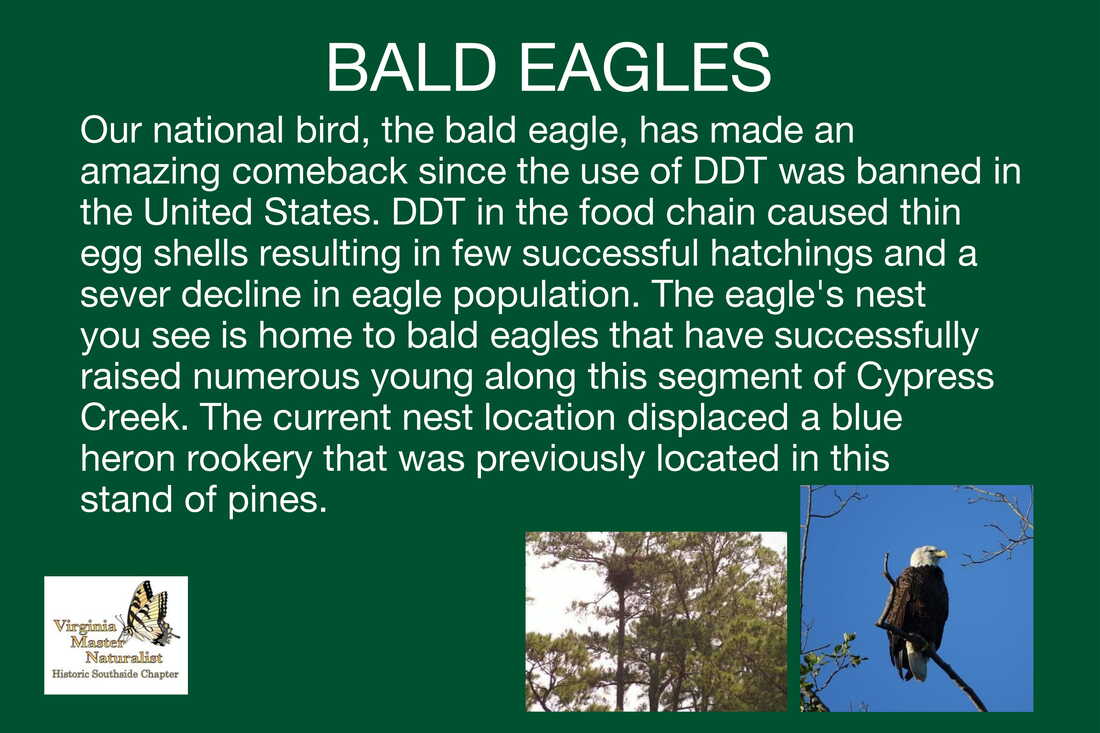Introduction
Bald Eagles are large birds of prey native to North America. Since 1782, the Bald Eagle has been the United States' national emblem and mascot. The Bald Eagle isn't actually bald. Bald Eagles are mainly brown with a white head and tail. The name actually comes from an old English word, piebald, which meant “white-headed" rather than hairless. The Bald Eagle is found only in North America. For the most part, Bald Eagles live in forests that are near rivers, lakes, reservoirs, marshes and coasts. Some also live near fish processing plants, dumps, and other areas where they can find food.
Some facts to consider
Select either of the other buttons to learn more our national bird and their status in Virginia.
Bald Eagles are large birds of prey native to North America. Since 1782, the Bald Eagle has been the United States' national emblem and mascot. The Bald Eagle isn't actually bald. Bald Eagles are mainly brown with a white head and tail. The name actually comes from an old English word, piebald, which meant “white-headed" rather than hairless. The Bald Eagle is found only in North America. For the most part, Bald Eagles live in forests that are near rivers, lakes, reservoirs, marshes and coasts. Some also live near fish processing plants, dumps, and other areas where they can find food.
Some facts to consider
- Though the Bald Eagle is revered in North America, it almost became extinct. Over-hunting and habitat destruction were two causes of the population decline. Man-made products are also to blame. DDT, a pesticide, contaminated many of the fish that the birds ate. After eating contaminated fish, Bald Eagles would lay eggs with very thin shells, making reproduction difficult.
- Once the poison DDT was restricted in the 1970s, the Bald Eagle population started to rebound, according to the National Geographic. Today, the Bald Eagle is not endangered. There are currently more than 10,000 Bald Eagles in North America, according to the Red List of Threatened Species from the International Union for Conservation of Nature.
- Though Bald Eagles can't swim, they can cross water without flying over it. They will sit in the water and row themselves across with their wings, according to the Cornell Lab of Ornithology.
Select either of the other buttons to learn more our national bird and their status in Virginia.








